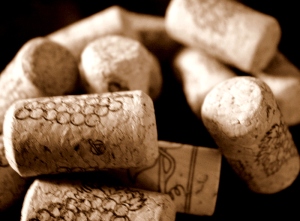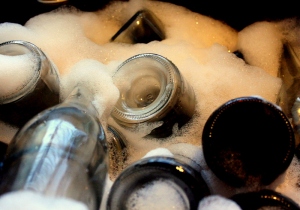BACKGROUND

- Type of plant: Humulus lupulus: A perennial twining plant with annual vines that produce flowers called cones. When planting you use a rhizome (piece of root taken from a mature plant). You cannot grow hops from seeds!
- Season: spring-beginning of summer. Hops are a perennial plant.
PREPARATION STAGE
Farms harvest the rhizomes in March and April. Some stores will allow you to pre-order them.
Links to order hop rhizomes:
- Adventures in Homebrewing (Begin shipping in April)
- Freshops (For domestic US shipping only)
- MoreBeer (Rhizome Pre-order sale)
- Northern Brewer (Can’t ship to HI, AK, WA, ID)
- Northwest Hops (Very early shipping, usually late-february to mid March)
- Williamette Valley Hops
- How to Store Hops Before Planting
Upon receiving the hops, refrigerate them (not below freezing temp) and ensure that they are well-ventilated.
Southern exposure is the ideal choice because hops need 6-8 hours of sunshine a day. But if that’s not possible then east and west exposure will work but the cones will not be as large. The soil should be light-textured and allow for drainage. You aerate the soil by turning it over several times. Typically the pH is 6.0-8.0. You should fertilize the soil liberally before planting. Ensure that the soil is rich in phosphates, nitrogen, and potassium. The soil should contain 20-30% organic matter like compost or dehydrated cow manure. Zymurgy advised to apply 5 lbs of fertilizer per 100 square feet once in the early spring and then 6 weeks later. Choose a place with a lot of space. Hops can grow up to 1 foot/day. Also make sure that there is protection against strong winds because they may break the vines.
ACTION TIME
Plant hops in the spring so you avoid the winter frost. Rhizomes can be planted vertically or horizontally but it is advised to place the root side of the rhizome faced down. But if there are buds already starting to show, ensure that they are kept pointing upward. Place the rhizomes about 4 inches deep. You can cover the soil with straw or light mulch to inhibit weed growth and help retain moisture in the soil. This part of the plant that is under the soil is called the crown and the vines shoot off the crown.
For mixed variety plants, give 5 feet between plants. You want this distance because hops roots grow very quickly and take control of the field they’re in unless you separate them and trim the roots each season. You trim the roots by taking a spade and cutting around the rhizome to trim the roots back about 1 foot. This is done in spring. For identical varieties give 3 feet distance between plants.
Hop vines (aka: bines) can grow as tall as 25 feet so it’s preferred to plant next to an arbor, fence, post, or trellis. You can also place a stake in the ground, tie a string or twine to a hook and make a line. Try to use a plastic twine/string since it is less susceptible to rotting caused by the sun and moisture. When the bines are 1 foot in length you can begin wrapping the bine around the string/twine and it will continue to grow from east to west around the twine (this is why hop vines are called bines!) Do not do this during a cool or cloudy day because the shoots are brittle at that time and may snap. Instead wait for a warm sunny day (particularly in the afternoon) since the shoots are more pliable then. Remember that year after year you will want to reinforce your trellising because it may have weaken from the weather, environment, or just by time.

Mag, from Perm’s Brew Pick and More designed this growth system. For other inspirations just google “hops trellis”.


In dry climates or a very hot summer the hops may need to be watered daily. But too much watering can cause the rhizome to rot. During the first year, the young hops have a small root system so they require frequent watering.
It takes about 125 frost-free days before the bines produce flowers. Healthy bines will produce about 1-2lbs of dried flowers.
After the first year of growing the hops, the initial shoots should be pruned off because they are not very strong. The second pair of shoots that spring up are the sturdier second growth. After choosing 3-4 bines from the second growth, prune the other bines at the stem of the base so that all the nutrients are directed into going to the 3-4 main bines.
- Diseases to Watch Out For
Pseudoperonospora humuli (downy mildew) is the main disease to watch out for. The mildew occurs in spring. The bines will look brittle and spikey and will stop growing. Curled underleaves with a silvery upper surface and black underside is another sign of mildew. When you see these leaves you must remove them immediately lest the mildew spreads. Crown infection can lead to crown death and plant death. Bud infections will lead to poor plant vigor. Vine infections will spike the growing point. Downy mildew is caused by having too much moisture trapped in the leaves. Therefore using sprinklers are a bad idea, rather use drip irrigation so that the water is going directly to the roots while the foliage remains dry. Prevent mildew by stripping leaves off the bottom 3 feet of the bine. However rainy weather can also cause mildew and that is a factor hard to control. Thus some growers use a fungicide (anything containing copper hydroxide) to provide protection against mildew. Hop varieties more susceptible to mildew are Cascade and Williamette. Nugget and Pearle hops are hardly at risk for mildew.

Verticillum wilt (wilt) damages hops because it reduces water and nutrient flow throughout the entire plant. A sign of wilt are leaves with dull green tissue alternating with yellow bands. Remove the leaves immediately to prevent the spread of infection. You can also use fungicides with copper hydroxide to prevent wilt.

Phorodon humuli (hop aphid) are translucent pale green bugs that reproduce very quickly and are usually spotted on the leaves underside. Once the eggs hatch they will spread to all parts of the bines. Hop aphids appear in cool weather. Remove the aphids by using an insecticidal soap or any other organic insecticide. However take care of noting the waiting time required by most insecticides. For example Diazinon requires a 14 day waiting period between spraying and harvesting. A more natural alternative to insecticides are using ladybugs- the aphid predator. MoreBeer suggests refrigerating the ladybugs so that they will be forced to use energy to stay warm. After a day release the hungry ladybugs on the bines. Or you can plant Golden Marguerite flowers that attract ladybugs.

Tetranychus urticae (spider mites) come out during the warm weather. Barely visible to the naked eye, a sign to watch for are fine white webs under leaves and small freckle-like spots on the top of leaves. Defoliation and red, rust colored cones are other signs. Since spider mites like the warmth, they will affect the top of the bines first and then work their way down. The insecticide used for aphids will also work for spider mites. Or a more organic way is to buy praying mantis as spider mites are their natural prey.


AFTERMATH
Harvest around late August/September. The first harvest usually yields very little because the plant is trying to first establish a crown and root system. Hops do not reach their peak harvest until the second year. Test its ripeness by squeezing a cone by your fingers. If the cone is damp, very green, and stays compressed after squeezing then it is not yet ready to harvest. The cone is ripe when it dries out and it re-expands to its shape. There will also be more lupulin (yellow powder) in the cone and will be very sticky. The hop aromas will also be more pronounced. Hallertauer, Tettnanger, Fuggle, and Saaz varieties ripen faster than Cascade, Willamette, Nugget, Bullion, and Spalt.
When you harvest, cut the string/twine and guide the bines to the ground. The bines will begin to dry and the sap will return to the roots for winter storage. You can then pick the cones off. If the hops don’t ripen at the same time then harvest each cone as it ripens.
After harvesting cut the bines back 3 feet. The winter frost will kill off the bines, and after which you can cut the bines further back and cover them until spring.
Hops are 70% moisture when ripe, but only 10% when dried to the equivalent of commercial hops. Use a food dehydrator and dry your hops for several hours. They are ready when you split the hop and it is dried on the inside. It will feel papery and the petals will break off in the end. You can also dry the hops in the oven at very low temperature (It should not exceed 140 degrees F). Or you can place the hops on a screen and let them dry OUT of direct sunlight and in an enclosed area to keep bugs out. Another common technique is placing the hops in a brown paper bag and allowing them to dry there for a week or two.
If cones are not properly dried, they become moldy, wilted, or even rancid and cannot be used for brewing. Take care not to overdry hops to the point where the petals and stem shatter in your hand when you open the cone. You will lose the hop’s Alpha Acid Content (the level of bitterness ). Familiarize yourself with the Alpha Acid Content of your breed of hops and depending on that level, you may want to use store bought hops designed for their alpha acid content.
After drying, store the hops in an airtight container (to reduce oxidation) and place them in the freezer or refrigerator (depending on how soon you plan on using them). Most suggest using a ziploc plastic bag and filling that bag to the top with hops to ensure no oxidation.
- Testing Alpha Acid Content
You can send your hops to a lab that will test for the alpha acid content. However this usually costs between $20-$30. The following links are labs that will do this:
- Brew Laboratory
- Siebel Institute of Technology (located in White Labs in San Diego)
Dr. Leonard Perry from University of Vermont released a guide on how to perform a home test to check the alpha acid content of homegrown hops. He uses phenolphthalein as the indicator.
Additional Resources
Hops: Organic Production (free digital pdf from National Sustainable Agriculture Information Service)
HopsTV (link to Youtube Channel for HopsDirect.com)
Hop Varieties for Beer Brewing (Includes the alpha acid content linked to each variety)
How to Grow Hops (Offers a list of hops and their desired growth location)
Instructions on How to Grow Hops (Midwest Supplies PDF)
Managing Powdery Mildew of Hops in the Northeast (PDF from the University of Vermont Extension Program)
Small Scale and Organic Hops Production (free pdf from Adventures in Homebrewing)
The Two Spotted Spider Mite in the Northeast Hopyard
References:
BeerSmith Growing Hops in the Garden
Brewing Techniques Hops in the Garden
Hop Downy Mildew
MoreBeer Growing Your Own Hops
Zymurgy In the Backyard







































